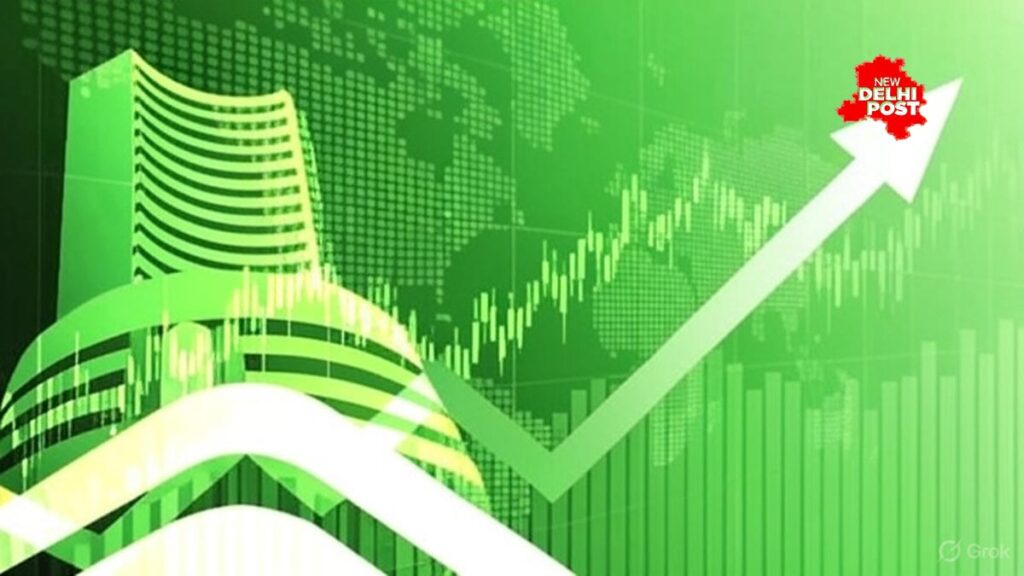The Reserve Bank of India’s surprise 50 bps repo rate cut on June 6, 2025, sparks a jubilant response in Indian markets, with Sensex and Nifty climbing amid a global market boom, including gains in Japan’s Nikkei and Topix indices.
Mumbai: Indian stock markets celebrated on June 6, 2025, following the Reserve Bank of India’s (RBI) unexpected 50 basis points (bps) repo rate reduction to 5.5%, announced earlier in the day. The BSE Sensex surged by 300 points to close at 81,742, while the NSE Nifty crossed the 24,850 mark, settling at 24,874. The rally, bolstered by a 100 bps cut in the Cash Reserve Ratio (CRR) to 3%, aligns with a broader global market upswing, as Japan’s Nikkei rose 0.31% and Topix gained 0.45% on Friday.
A Surprise Rate Cut Ignites Optimism
The RBI’s decision, made during the Monetary Policy Committee (MPC) meeting from June 4 to 6, exceeded market expectations of a 25 bps cut, injecting ₹2.5 lakh crore in liquidity into the banking system. Governor Sanjay Malhotra emphasized a shift to a neutral stance, citing controlled inflation at 3.2%—the lowest since July 2019—and a focus on growth. “This move will enhance liquidity, making borrowing cheaper and encouraging capital expenditure,” said Divam Sharma, Founder & Fund Manager at Green Portfolio PMS. Rate-sensitive sectors led the rally, with the NIFTY Realty index jumping 3% and NIFTY Bank gaining 1.2%, reflecting bullish sentiment.
Global Markets Join the Boom
The Indian market’s rise mirrors a global equity boom. Japan’s Nikkei 225 climbed 0.31% to 37,562, while the Topix index advanced 0.45% to 2,783, driven by optimism in auto and tech stocks. South Korea’s Kospi also traded higher, supported by a positive tone from a Trump-Xi call easing trade tensions, as noted by U.S. President Donald Trump on June 5, 2025. Wall Street futures showed gains ahead of the U.S. opening, with the S&P 500 futures up 0.5%. A 2025 HSBC report highlighted that global markets have priced in peak tariff-related stress, though fiscal policy uncertainty remains a concern.
Sectoral Gains and Economic Implications
Auto, real estate, and banking stocks spearheaded the rally in India. Tata Motors rose 4.5%, while HDFC Bank gained 2.8%, hitting a 52-week high. The NIFTY Auto index advanced 1.5%, buoyed by lower borrowing costs. “Consumption may get a boost with cheaper EMIs,” noted a post on X by
@Wealth_Counter, capturing market sentiment. However, some analysts caution that banking stocks could face margin pressures in the medium term, as lower rates might squeeze net interest margins, per a 2025 ICICI Securities analysis. Brent crude prices, slipping 0.29% to $65.15 a barrel, further supported India, an oil-importing nation, by reducing input costs.
Broader Impact Amid Global Dynamics
The RBI’s rate cut aligns with India’s strategic economic moves, especially as global trade dynamics shift due to the Trump-Musk feud and U.S. tariff policies. The Chenab railway bridge inauguration by PM Modi on the same day underscores India’s focus on infrastructure-led growth, potentially amplifying the rate cut’s impact. A 2025 Careedge Ratings report suggests that continued rate reductions could push the repo rate to 5.25% by year-end, fostering investment. However, savers may face lower returns on fixed deposits, with rates already trending downward, per banking sector data.
A Balancing Act for Future Growth
While the market rejoices, experts urge caution. “The neutral stance signals limited further liquidity support,” said economist Anjali Verma, highlighting potential inflationary risks if global commodity prices rise. The Sensex and Nifty’s gains reflect short-term optimism, but sustained growth depends on global stability and domestic consumption trends. As India navigates these dynamics, the RBI’s pro-growth measures, paired with infrastructure milestones, position the economy for a transformative phase, though challenges like global trade tensions and banking margins linger.


